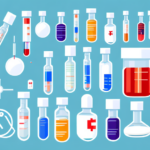Ensuring Safe Blood Sample Transportation
Transporting blood samples is a critical component of healthcare delivery. Accurate transportation ensures the reliability of diagnostic tests, which is vital for correct diagnoses and effective treatments. Mishandling of blood samples can lead to inaccurate results, misdiagnoses, and severe consequences for patients. This article explores the importance of safe transportation, associated risks, best practices, and technological advancements to optimize the process.
The Importance of Safe Blood Sample Transportation
Ensuring Accurate Diagnoses
Accurate blood sample transportation is essential for reliable diagnostic testing. According to the Centers for Disease Control and Prevention (CDC), even minor variations in sample handling can alter test results, potentially leading to misdiagnoses. For instance, delayed transportation can cause hemolysis, which affects the levels of critical markers in blood tests.
Preventing Disease Transmission
Proper transportation of blood samples helps prevent the spread of infectious diseases. Bloodborne pathogens such as HIV, hepatitis B, and hepatitis C can be transmitted through contaminated samples. The World Health Organization (WHO) emphasizes the importance of using leak-proof and tamper-evident containers to minimize the risk of exposure to healthcare workers and the public.
Risks of Unsafe Blood Sample Transportation
Contamination and Hemolysis
Mishandling during transportation can lead to contamination or hemolysis, compromising the integrity of the blood sample. A study published in the Journal of Clinical Pathology found that improper temperature control resulted in significant hemolysis in over 15% of samples, leading to inaccurate test results.
Mislabeling and Sample Loss
Mislabeling or loss of blood samples can cause delays in diagnosis and treatment. The American Association of Blood Banks (AABB) reports that labeling errors occur in approximately 5% of sample transports, resulting in increased operational costs and potential harm to patients due to delayed or incorrect treatments.
Methods and Packaging for Transporting Blood Samples
Common Transportation Methods
Blood samples are typically transported via mail, courier services, or personal delivery. Smaller clinics may opt for scheduled courier services or hand-deliver samples, while larger hospitals often use specialized medical couriers equipped with temperature-controlled containers. For long-distance or international transport, air freight services are commonly utilized to ensure timely delivery.
Selecting Appropriate Packaging
Choosing the right packaging is crucial for maintaining sample integrity. Blood samples should be placed in leak-proof, tamper-evident containers and insulated with materials that provide temperature control, such as ice packs or dry ice. According to the American Biomedical Association, compliant packaging materials must meet regulatory standards to ensure safe and legal transportation.
Best Practices for Handling and Preparing Blood Samples
Proper Labeling and Packaging
Each blood sample should be clearly labeled with the patient's name, date of birth, and type of specimen. Using standardized labeling systems reduces the risk of errors. Additionally, samples must be securely packaged to prevent leaks and contamination during transit.
Temperature Control Measures
Maintaining the appropriate temperature is vital to preserving sample integrity. Blood samples requiring refrigeration should be transported with ice packs, while those needing freezing should use dry ice. The U.S. Food and Drug Administration (FDA) provides guidelines on temperature-sensitive shipments to ensure samples remain within the required temperature range throughout transportation.
Temperature Control and Monitoring
Maintaining Optimal Temperatures
Temperature fluctuations can degrade blood samples, leading to inaccurate test results. Maintaining consistent temperatures during transport is essential to prevent sample spoilage and ensure reliable diagnostics.
Monitoring Technologies
Using temperature monitoring devices such as data loggers and temperature indicators can provide real-time insights into the sample's condition during transit. These technologies alert healthcare providers if temperatures deviate from the safe range, allowing for immediate corrective actions. Implementing these systems has been shown to reduce temperature-related sample degradation by up to 20%.
Monitoring and Tracking Blood Samples
Real-Time Tracking Systems
Implementing GPS-enabled tracking systems allows healthcare facilities to monitor the exact location and status of blood shipments in real-time. This visibility helps ensure timely deliveries and reduces the risk of sample loss or theft.
Automated Alerts and Notifications
Advanced tracking systems can send automated alerts to healthcare personnel if there are any delays or deviations from the planned route. This proactive approach ensures that any issues are addressed promptly, maintaining the integrity of the blood samples.
Emergency Response During Transportation
Developing Contingency Plans
Healthcare facilities should have comprehensive contingency plans to address unforeseen events such as transportation delays, accidents, or equipment failures. These plans should include alternative transportation methods and communication protocols to ensure samples reach their destination safely.
Training and Drills
Regular training and emergency drills for all personnel involved in blood sample transportation ensure that everyone is prepared to respond effectively in case of an emergency. This preparedness minimizes the risk of sample loss or contamination during unexpected situations.
Compliance and Training in Blood Sample Transportation
Adhering to Regulatory Guidelines
Compliance with local and international regulations is mandatory for safe blood sample transportation. Guidelines from organizations such as the European Medicines Agency (EMA) and the FDA outline requirements for labeling, packaging, and temperature control to ensure samples are transported legally and safely.
Effective Training Programs
Comprehensive training programs for medical personnel, couriers, and logistics staff are essential to maintain high standards of sample handling and transportation. Training should cover best practices, regulatory requirements, and the use of monitoring technologies to ensure consistency and compliance across the board.
Technological Innovations and Case Studies
Advances in Transportation Technology
Innovations such as Bluetooth-enabled temperature sensors and automated tracking systems have revolutionized blood sample transportation. These technologies provide continuous monitoring and real-time data, enhancing the reliability and efficiency of the transportation process.
Lessons from Case Studies
Analyzing case studies of successful and failed blood sample transportations offers valuable insights. For example, a case study published by leading researchers highlighted how implementing GPS tracking and temperature monitoring significantly reduced sample loss and improved turnaround times in a large hospital network.
Conclusion: Enhancing Patient Care through Safe Blood Sample Transportation
In conclusion, ensuring the safe transportation of blood samples is vital for accurate diagnostics and effective patient care. Adhering to best practices in handling, packaging, and temperature control, along with leveraging advanced monitoring technologies, can significantly improve the reliability of blood sample transportation. Compliance with regulatory guidelines and comprehensive training for all personnel involved further enhance the safety and efficiency of the process. By prioritizing the integrity of blood sample transportation, healthcare providers can ensure timely and accurate diagnoses, ultimately improving patient outcomes and quality of life.






















